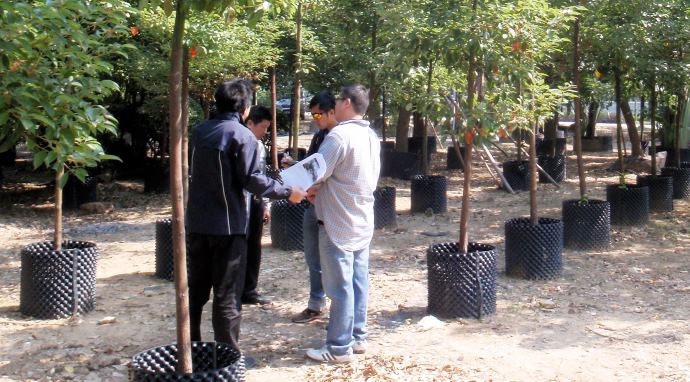ATP’s certified arborists help clients select trees according to the guiding principle of “the right tree for the right place”. Selecting the right tree for the right place means the client will not only have good-looking healthy trees that perform the functions required of them, they will also save as much as millions of dollars in long-term tree management strategies.
Selecting a tree to replace a removed tree or to plant in a new development may seem like a straightforward task, but there are many factors to consider. Overlooking one aspect of a tree’s growth patterns or the unique aspects of the environment in which it is to be planted can result in a variety of problems, from aesthetic or functional failure to the need for costly management or even removal.
Some of the many things to consider when planting a tree include:
Function
Trees can affect how light, heat and wind affect a property and can be used for noise abatement and traffic control. They can also serve aesthetic functions such as providing seasonal colour, flowers or fruit.
Mature size
Trees that outgrow their space can be a costly headache and can block views, cause damage to pavements and car parks and become safety liabilities when extreme weather threatens.
Tree form
There are two types of tree forms: excurrent and decurrent. Excurrent trees grow straight upward with a single trunk, known as a central leader. Examples of excurrent trees include Bombax ceiba, Casuarina equisetifolia and Araucaria heterophylla. Decurrent trees grow into a more rounded form with secondary trunk-like branches, known as scaffold branches, originating from the trunk. Examples of decurrent trees include Delonix regia, Cinnamomum camphora, Adenanthera pavanina and Ficus microcarpa.
Nearby infrastructure
A tree’s branches, roots and trunk all have the capacity to interfere with man-made infrastructure such as overhead wires, buried cables and other utilities. If an improper tree is selected for a location with overhead wires, it may require pruning that negatively affects its appearance or future growth.
Soil
Different trees have different nutrient needs and root structures. Knowing which types of soil conditions suit which types of trees is an important part of the tree selection process.
Insects
Certain trees are more likely to be affected by certain insect pests, requiring costly and toxic pesticides. Additionally, covering a property with only one type of tree can result in the devastating loss of the entire property’s trees, should insect populations that feed upon those particular trees take hold locally.
Whether you need to plant a single tree or hundreds of trees, ATP can provide you with the research and insights to make an informed choice that allows your trees to grow into old and valuable specimens.

